
In a gardening class I once took, the instructor compared the pruning of plants to cutting our hair. You can’t just let your hair grow forever, and at some point, you have to cut it back if you want to have a lush and healthy mane.
It wasn’t my favorite metaphor, but I understood the gist: pruning is necessary, no matter how reticent we are to do it.

Pruning doesn’t just refer to cutting away dead leaves or spent flowers, but to selectively removing different plant parts to encourage new and healthy growth. In other words, pruning is not just about deadheading (removing the spent blooms of the plant), but about growing vigorous and pretty-looking plants.
Related Reading:
Another term we’ll mention in this context is pinching.
Pinching refers to cutting off the top inch of growth from young shoots. Pinching helps keep a compact shape and encourages side branching.

Why is pruning beneficial for perennials?
First of all, pruning helps keep your plants healthy, simply because you’re removing dead or diseased materials. Pruning also maintains good air circulation, which in turn helps lower the risk of fungi and rot.
If done at the right time, pruning will jumpstart the growth spurts of old plants and increase the number of blooms you get throughout the growing season.
Last, but not least – and for some gardeners the most important aspect – pruning contributes to landscape cohesion and helps your plants look more “intentional” and “manicured.”
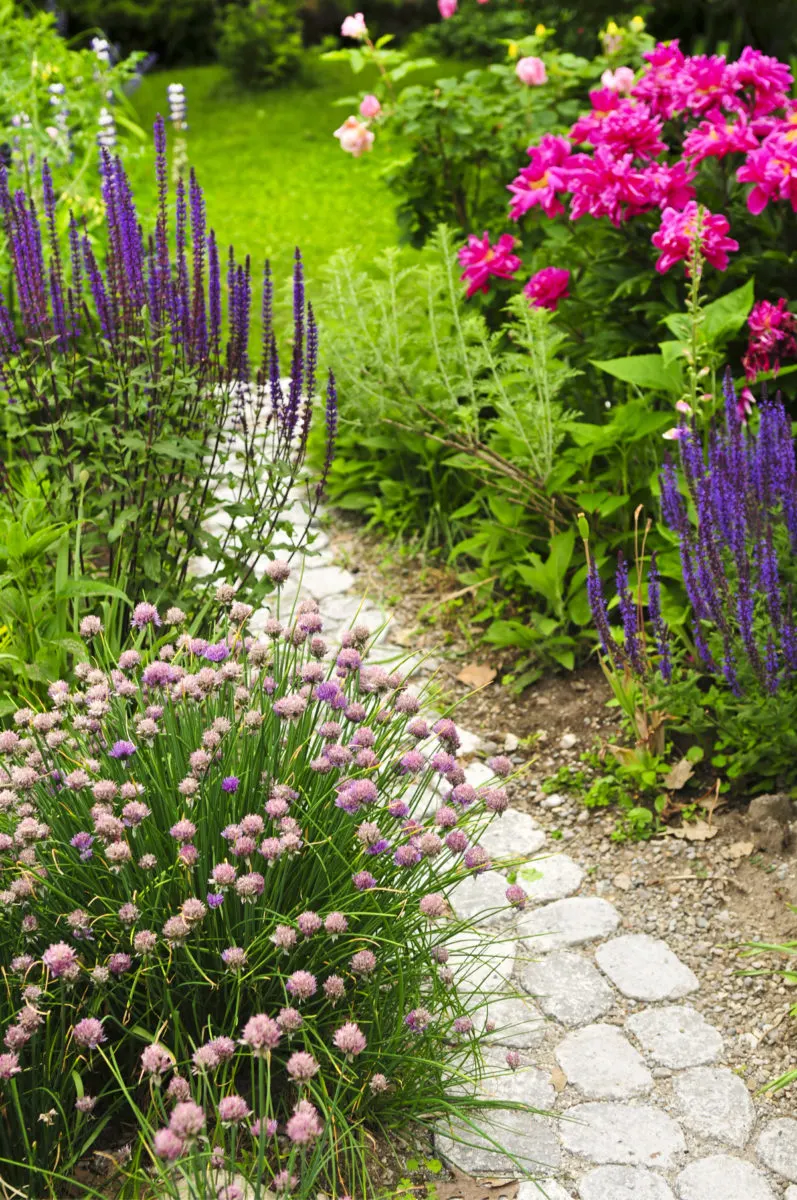
Should you prune perennials in spring?
When it comes to annuals, it’s fairly easy to decide their fate once the cold weather sets in. Once hit by the first frost, it’s game over: annuals will turn black and scraggly. So the decision to relocate them from our garden beds to our compost bins comes easy.
Perennials, on the other hand, require more consideration when it comes to pruning. Should we prune at the end of the gardening season (in the fall) or just before a new gardening season (in spring)?
The answer to this question is, predictably, it depends. For some plants, it’s a clearcut matter (no pun intended), settled by whether the plant has been affected by any foliage disease. Removing the old foliage as soon as the season is over helps prevent the spread of the disease.

Similarly, if your perennials are heavy self-seeders (such as garlic chives or butterfly weed), and you want to avoid a hostile takeover of your garden, then you should prune them in the fall.
There are some perennials, such as hostas, hollyhocks and peonies, that are customarily pruned in the fall in order to prevent winter damage.
However, there are so many more benefits to pruning your perennials in spring. Here are a few of the reasons why it’s really worth the wait, even for impatient gardeners such as myself.
Perennials are a food source for birds during winter.

We sometimes tend to treat our gardens as mere extensions of our living spaces. And this mindset encourages us to prefer gardens that look neat, tidy and uncluttered.
But gardens are their own ecosystems where even in the dead of winter, many birds rely on the seed heads of perennials for food. For instance, the seeds of black-eyed Susan, oxeye sunflower and echinacea are a buffet of delight for goldfinches. So tidying up our gardens may seem like the right thing to do, but this simple habit deprives wildlife of a precious source of nourishment.
Perennials provide shelter for pollinators in winter.

About a third of the native bees of North America overwinter in plant cavities, including hollow stems, leaf debris and plant husks. If we wait until spring to clean up your perennials, we’ll be giving them a safe environment to spend the winter in.
And on a more selfish note, beneficial insects (such as ladybugs, who love to devour those pesky aphids) overwinter in messy plant debris. So it’s in our best interest, as gardeners, to provide them with a safe habitat during winter.
Some perennials need the protection of their own foliage in winter.

Some perennials are more likely to emerge out of winter unscathed if they have an extra layer of insulation. For instance, plants such as red-hot poker, chrysanthemums and anise hyssop need the shelter provided by their leaves and tops in order to make it through the winter. In this respect, they’re self-mulching, and saving us time and effort come spring.
Perennials create gorgeous winter landscapes.

If you’re the type of gardener that prefers a pristine tidy garden, may we attempt to convince you to give your winter garden a try?
Instead of spending the end of the growing season pulling out plants, trimming everything in sight and turning over the soil, how about letting it be for a few more months? Not only does this mean less work in the damp short days of fall, but we guarantee you’ll be rewarded with a visually interesting landscape when everything is covered in a blanket of snow and glittering frost.
How to prune perennials
Ideally, you should prune plants while they’re still dormant in spring. This looks a little bit different for every plant, depending on the variety you’re growing and on your climate, so there’s no universal rule of thumb about how much you should cut off.
You’ll find more details about the most common perennials that you should prune in spring in the list below.
In general, the closer to blooming time your prune, the higher the likelihood that you’ll delay the blooms (as the plant uses its energy to regrow the pruned part and has less energy to put into growing blooms).
If you’re cutting early in the spring season, leave about five inches above the soil. If you’re pruning later in the season, when there might be a chance of new growth, make sure to inspect the plant first. If there’s new growth coming up from the base of the plant, or if any of last year’s stems are producing new leaves, you should prune just above this green.

If you’re pruning perennial ornamental grasses, keep in mind that they prefer being trimmed back as close to the soil as possible before their new spring crowns begin to emerge.
Since we’re talking about perennial plants, not shrubs or trees, a pair of high-quality garden pruners and a pair of gardening gloves should be all the equipment you need to get the job done.
In no particular order, here are the most common perennials you should prune in spring:
1. Chrysanthemums

We usually tend to associate mums with fall gardens, but there are many varieties that bloom in late spring and summer. Left to their own devices, without any pinching, some chrysanthemum varieties may have poor bloom and grow too leggy, causing the plant to topple.
When it comes to pruning, you should cut off a third to a half of the fall-blooming varieties in early spring. If you notice that green leaves and shoots have already formed, make sure to prune above the leaf node.
For early blooming varieties, you should cut mums back in early spring and continue pinching them into mid-summer.
2. Echinacea

Echinacea plants (also known as coneflowers) are a mainstay of the cottage garden. Their no-fuss demeanor and varied colored palette make them popular with gardeners in almost all hardiness zones.
New and delicate foliage emerges early in the spring, so it’s fairly easy to see where you should cut back the old growth.
Echinacea plants benefit from ongoing deadheading throughout the summer to encourage more blooms. You should leave the last blooms of the season to dry on the plant as they provide a safe overwintering space for insects. Allow the dry seed heads to help with self-seeding and you’ll soon have a much larger echinacea patch with very minimal effort. Echinacea don’t like being disturbed, so they should be allowed to grow in large clumps.
3. Asters

Asters (the Greek word for star) are such an understated plant. They’re sturdy, beautiful and not very demanding when it comes to the type of soil they prefer.
Just like chrysanthemums, you should pinch asters throughout the growing season to encourage bushy growth and extra blooms. Once the season is over, asters will go through a recovery period in the fall. Waiting until spring to cut them back to ground level will encourage this rhizomatous perennial to put all its energy into underground growth and come back strong the following season.
If they go through a hot dry spell, asters may develop powdery mildew. In very wet weather, they may also develop gray mold. If this happens, you should prune back the asters and discard the affected foliage (but not in your compost) as soon as you notice the problem. The plant is vigorous enough to bounce back quickly.
4. Russian sage (Perovskia atriplicifolia)

Despite its name, Russian sage resembles lavender more than it does the humble garden sage (Salvia officinalis).
Not rushing to prune this plant in the fall will reward you in spades come winter, when its boisterous bulk provides a visual treat in a fairly empty garden landscape. It’s also better for the plant to take advantage of its ingrown insulation during the cold months.
Just as the new buds are emerging in spring, cut back the dead stems right above them. If you remember early enough in the spring, you can give it a hard prune by cutting it off above four inches above ground level. If you want to encourage bushiness, you can also cut back a few of the old stems, even if they already have growth on them.

Russian sage ‘Little spires’ is a variety that stays rather compact (reaching around four feet in height), making it perfect for the lazy gardener who doesn’t want to work too hard cutting back this plant.
5. Lavender

Lavender is a Mediterranean shrub that can be pruned in the fall as well as in spring. However, it’s best to prune it in spring because the old stems and flowers help protect the new growth from winter frosts. If you keep up with pruning, some varieties will live up to twenty years.
Lavender is a plant that’s better managed gradually than all at once. If left unattended, its stems will turn woody, shapeless and bare.
But not all lavender is created equal. The first step is to identify what kind of lavender you have. English lavender (Lavendula angustifolia) needs deadheading once the blooms are spent in the fall. Come spring, you should cut back the stems to about 10 inches above the ground. If you leave this gardening job too late into the season, make sure you cut just above the new growth.
French lavender (Lavendula stoechas) needs a more gentle touch because it’s generally not frost resistant. So you should move it to a greenhouse or a conservatory if you’re gardening in a climate with long cold winters. The same pruning advice applies, although it’s better to leave the pruning for later in the spring to give the plant enough time to bounce back from the cold season damage.
6. Globe thistle (Echinops)
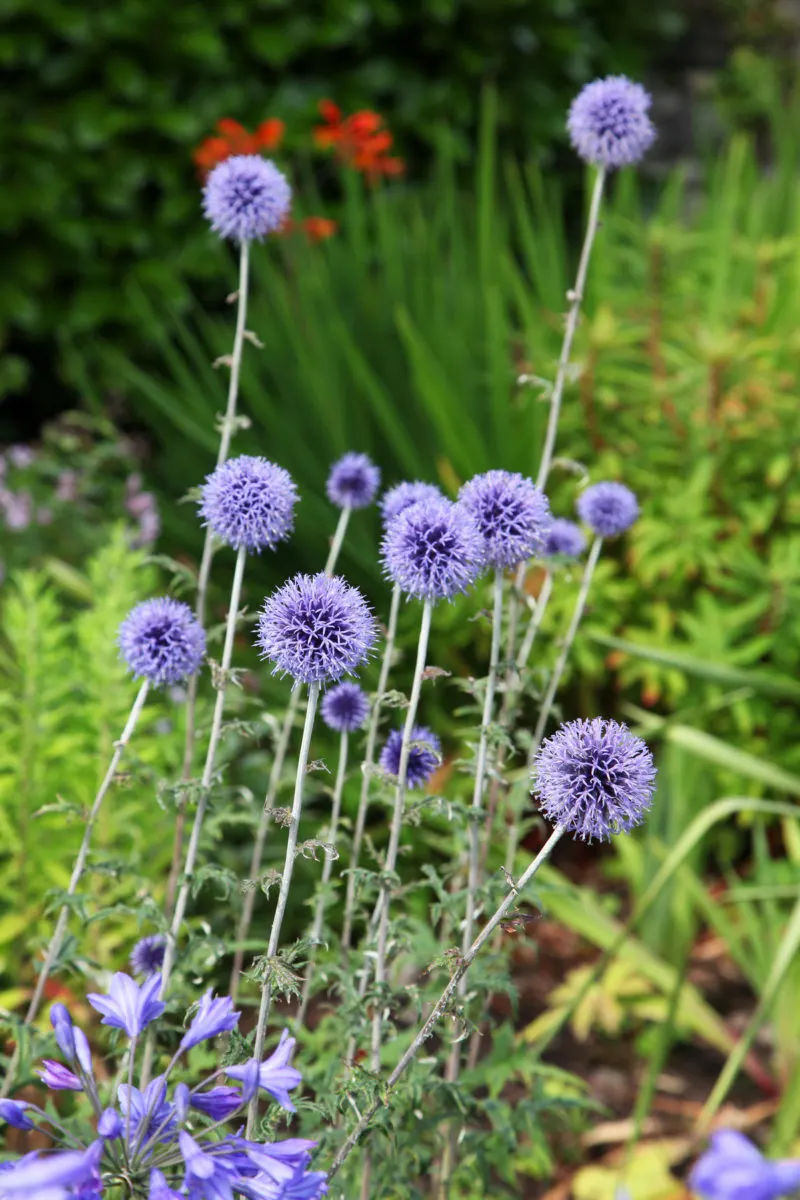
Echinops (not to be confused with echinopsis – a large genus of cacti native to South America) look out of this world: from the vibrant blue thistle to the white underside of its leaves. Globe thistles need to keep their foliage over the winter to protect them and ensure robust growth the following year.
Globe thistles are like winter lollipops for birds, so don’t deadhead the last flowers of the season. Not to mention that their sculptural seed heads look magnificent when frosted. But once spring rolls around, you can remove the dead foliage to reveal the new crown. You can also cut off the dried flower stem.

These plants produce more and more flowers as they mature each year and are happy to self-seed in your garden. No biggie, there’s more to share this way.
Since they grow quite tall and leggy, globe thistles sometimes topple over in winter storms and strong gales. If that happens, you can prune them to tidy them up, of course.
The leaves of the globe thistle are spiky, so please wear gardening gloves when you prune it back.
7. Red-hot poker (Kniphofia)
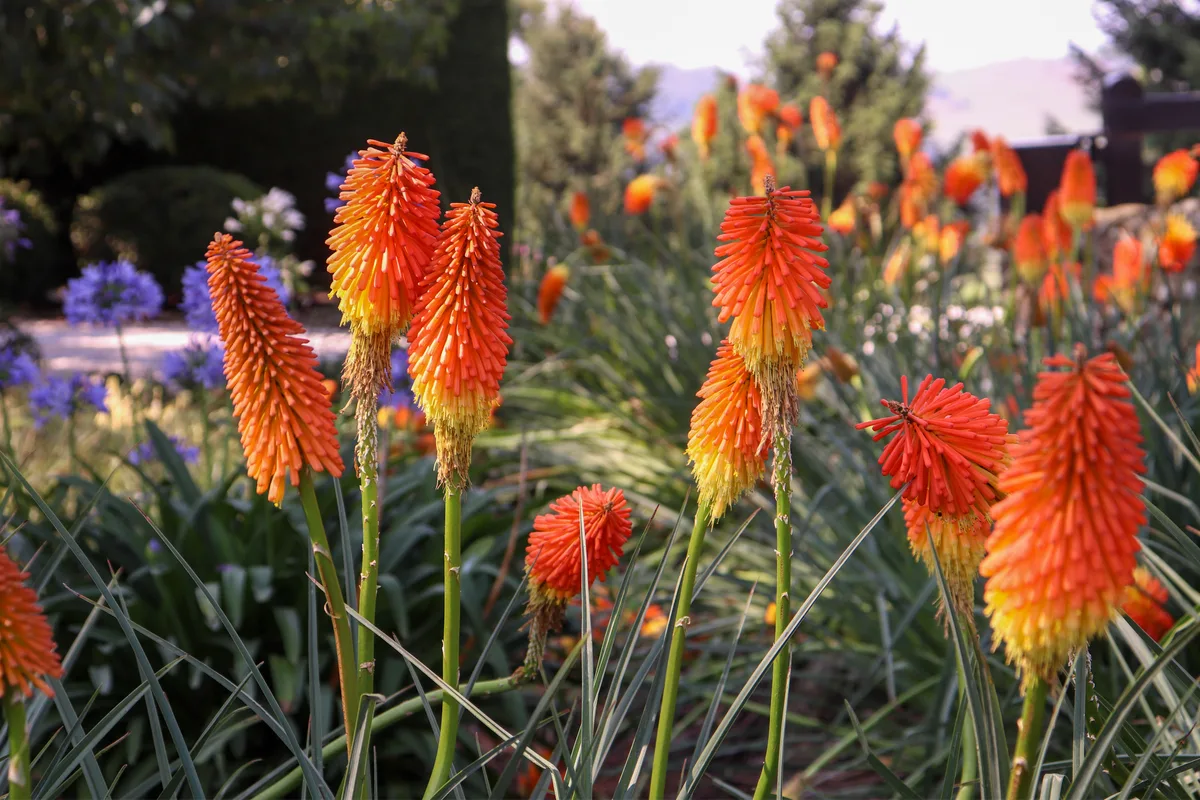
Another showstopping plant, the South-African native red-hot poker blooms stand out no matter what style of gardening you opt for.
The red-hot poker blooms intermittently starting in late spring and lasting until fall, so there are always new bright orange and red blooms on display. If you want to encourage more blooms, you can deadhead the flowers once they’re spent. However, leave the last batch of spent flowers on the plant until early spring of the following year. That’s when you can cut the spikes off at the base, always making sure that you are wearing protective gardening gloves.

Leave the dead foliage of the red-hot poker on throughout winter to protect the crown of the plant. You can tidy it up in spring by pulling off the dead leaves at the base of the plant. Be careful when you do this, as new growth can be interspersed with old foliage.
For an in-depth guide on how to grow this gorgeous plant (and some stunning varieties and hybrids), have a look at this post by Sherra.
8. Fuchsias

Fuchsias is a flowering shrub that likes a good hard prune in spring. Leave the old growth on during winter in order to protect the roots of the plants from hard frost. Fuchsia plants flower on new stock, so you should cut the plant back close to the base in early spring to encourage plenty of flowers in the summer.
If you’re growing fuchsias in outdoor pots, keep in mind that you need to overwinter them in a greenhouse or a cold frame. In this case, you should cut back the top half of the plant before you move it to a warmer place in the fall. Remove as many of the dead leaves as possible at this stage too.
9. Black-eyed Susan (Rudbeckia hirta)
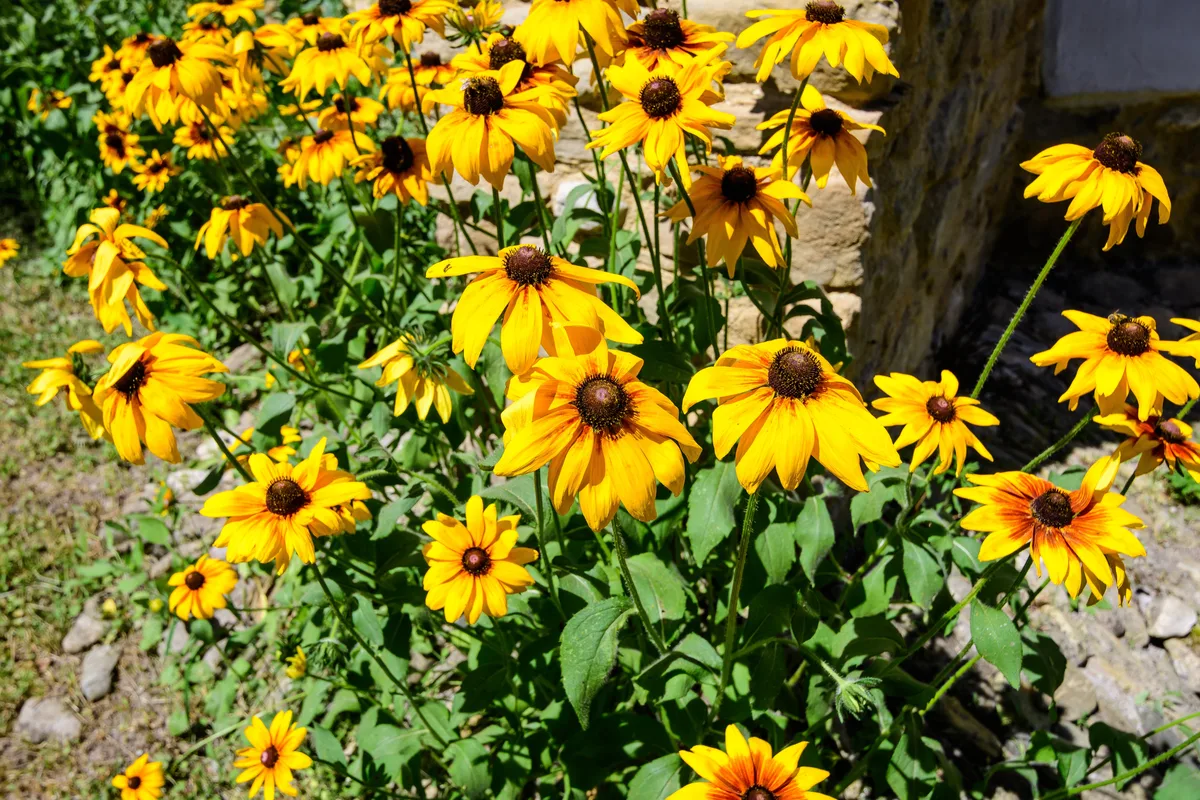
The seed pods of black-eyed Susan provide a veritable feast for birds in the dead of winter. And what’s more important, the seeds that aren’t eaten will self-seed and enrich the color palette of your garden with more beautiful sun-colored flowers (although rudbeckia can also come in hues of red, orange and purple).
You can let the first batch of flowers go to seed – and that will be it for the year – or you can deadhead the spent flowers to stretch the blooming season. Cut the stems about half an inch above the top leaves and you’ll be rewarded with another batch of blooms.

Black-eyed Susan is quite sensitive to frost, so you should leave the crown on to act as top mulch for the roots until the temperatures mellow in the spring. That’s when you can cut back the entire plant and any remaining flower stems.
10. Shasta daisies (Leucanthemum)

Just like their cousins, Rudbeckia and echinacea, Shasta daisies grow low-ground rosettes of evergreen leaves in early spring. So now’s the time to remove the old foliage and make room for the new crown to develop.
Shasta daisies will continue to bloom throughout summer and early fall if you deadhead them regularly. The tall upright flower stems die back in the fall, so you can remove the stems and the flowers then if they’re not really your style. Again, we recommend you leave them on in the winter to add visual appeal to your garden and act as a safe haven for overwintering insects.
11. Lamb’s ears (Stachys byzantine)

If we had to choose the hardiest plant on this list, it would have to be lamb’s ears (named this way due to the soft fuzziness of the leaves). Original to the dry arid climate of Turkey and Iran, this plant is the perfect choice for a low-maintenance garden, a xeriscape landscape or a rockery.
Pruning the plant is just as easy, as the plant will die back on its own in the winter and send up soft green shoots in the spring. Once you see the new growth, make sure you remove last year’s leftovers by cutting around the newcomers.

During the summer months, lamb’s ears will send off tall summer blooms topped up with colorful pink or purple pom-poms which grow very well in climates with a long hot summer. However, some varieties of lamb’s ears may not bloom every year.
When they’ve finished flowering, you can cut the stem of the bloom back to the ground.
12. Coral bells (Heuchera hybrids)

Remember how we mentioned in the introduction that some of the benefits of pruning perennials in spring is the fact that their leaves help the plant to self-mulch? Coral bells are the perfect examples of this principle in action.
Because it’s not very resistant to frost, a heuchera plant that is pruned in the fall might have an anemic growth the following spring. And if you expose too much of the main stem by pruning in the fall, you risk leaving the stem susceptible to frost damage and rot. You should only cut down coral bells in spring, unless you’re in a very forgiving climate.

Before you prune, inspect the plant carefully for new leaf growth at the center. As soon as you notice young shoots, then you’ll know it’s time to prune. Cut the old leaves as close as possible to the main stem, but be careful not to accidentally nip into the main stem.
Most coral bells varieties will benefit from seasonal tidying up, so you should keep an eye out for any dry or dead leaves. You can remove these at any time throughout the growing season.
13. Delphinium
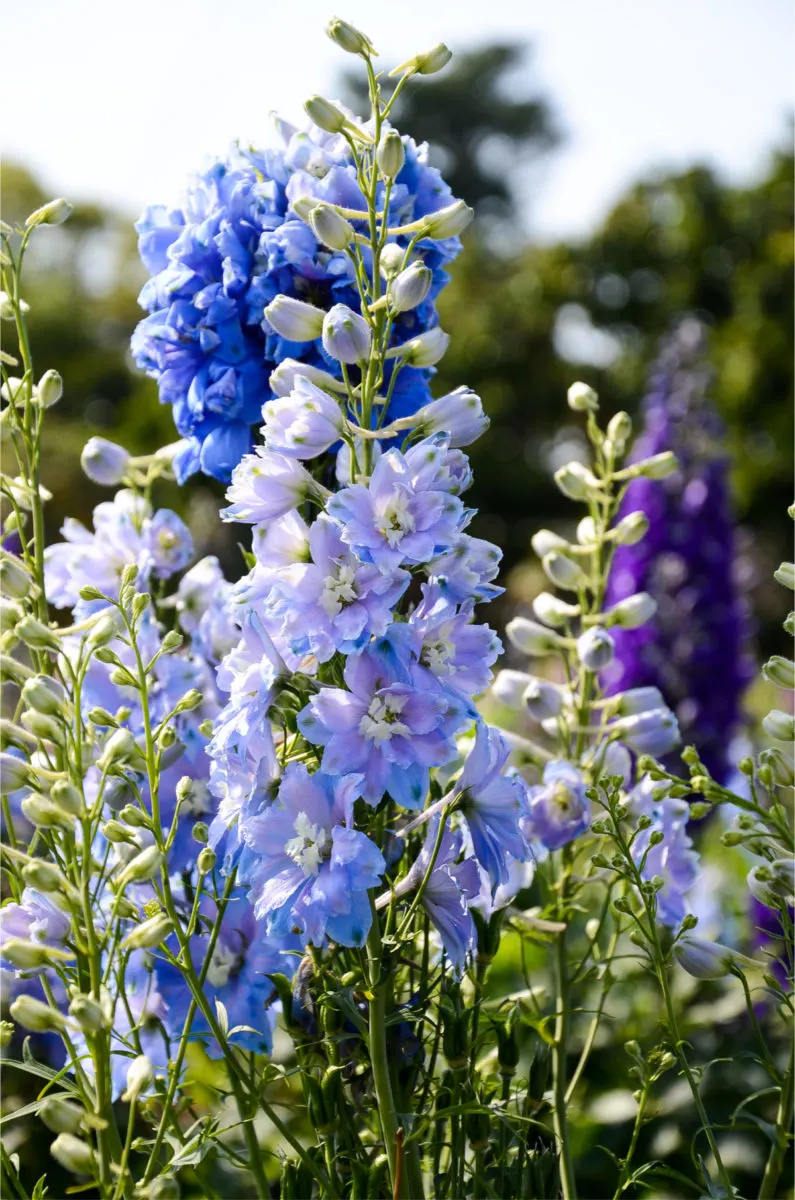
I didn’t know whether I should include delphiniums on this list, and here’s why: with around 300 varieties of delphinium on the market, the advice may not be universally applicable. Some delphiniums are annuals, some biennials and some perennials. So it’s essential to know which one you have in your garden to avoid disappointment.
Also, the beauty of this plant is only matched by its finicky nature. Delphiniums prefer cool wet summers (no longer a given in our changing climates); they don’t do well in hot dry weather, and they can’t handle strong winds. These are some of the reasons why some gardeners treat delphiniums as annuals by default. (Well, and maybe to avoid disappointment.)
If you’re lucky enough to have a perennial delphinium in your garden, don’t prune it back to the ground in the spring. Just cut back to the youngest leaves. However, you can cut back the blooms to ground level once they’re spent. If you have a long growing season, you may be lucky enough to be rewarded with a second bloom in the fall.
And one more trick: thin out the young shoots in spring if you want to encourage tall flower stems on the mature clumps.
14. Pincushion flower (Scabiosa columbaria)

Scabiosa is a flower much beloved by butterflies. And it’s a must-have addition to any cottage garden due to its pastel hues – most often purple, lilac and pink.
Even though it’s mildly frost-hardy (up to 23F – about -5C), scabiosa needs a bit of time to bounce back in the spring. That’s why you should prune it later in the season and only cut it down to the crown (not to ground-level) once the plant reaches one foot tall.
Through the summer season, you can pinch off the dead blooms to encourage the plant to produce more flowers and extend the blooming season.
15. Lavender cotton (Santolina)

This plant is neither lavender nor cotton, so most gardeners just use the name Santolina to avoid confusion.
However, due to their common Mediterranean origins, it does have some similarities to lavender: the plant starts off as delicate and small only to become shrub-like and woody if left unchecked.
You should allow Santolina plants to harden off for winter and only prune them in spring. However, don’t wait too long in the spring if you want to have flowers. (And you should – the bright yellow of the blooms goes perfectly with the gray-ish blue tint of the leaves). You should prune it regularly every spring just above the lower buds to prevent it from becoming too leggy and woody.

